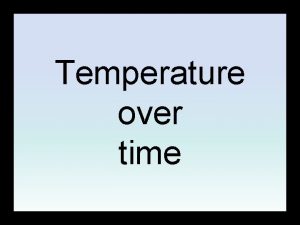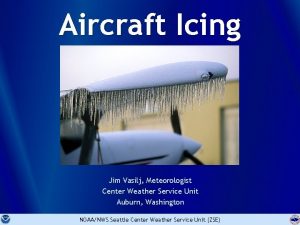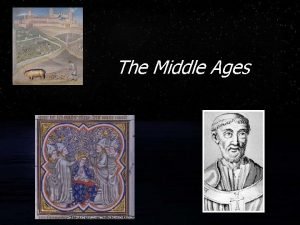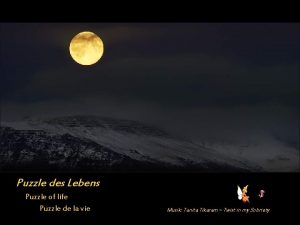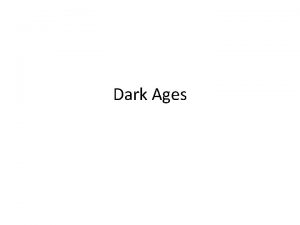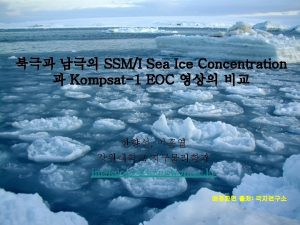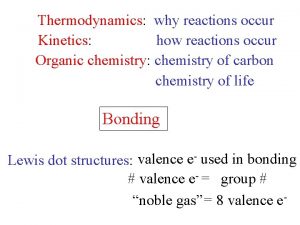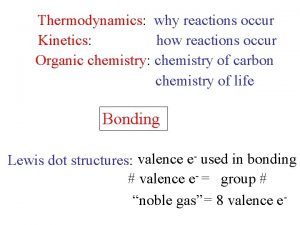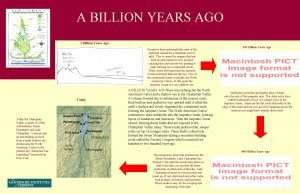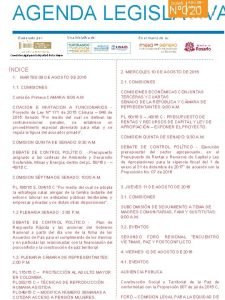Puzzle Ice Ages Myr ago Occur with a

















- Slides: 17

Puzzle: Ice Ages! Myr ago • Occur with a period of ~ 250 million yr • Cycles of glaciation within the ice age occur with a period of 40, 000 yr • Most recent ice age began ~ 3 million yr ago and is still going on!

Last Glacial Maximum: 18, 000 yr ago 32% of land covered with ice Sea level 120 m lower than now


Cycles of glaciation/deglaciation –what cause them? ? • Milankovitch Hypothesis: they occur due to cyclic changes in the summer insolation of Northern Hemisphere. These cyclic climate changes are, in turn, due to variations in the Earth’s orbital parameters: – Precession (26, 000 yr cycle) – Eccentricity (varies from 0. 00 to 0. 06 with 100, 000 and 400, 000 yr cycles) – Axis tilt (varies from 24. 5 o to 22. 1 o with 41, 000 yr cycle Milutin Milankovitch 1920

axis Celestial equator As a result, planes of the ecliptic and celestial equator make an angle 23. 5 o

The axis tilt causes the seasons!!

Drawn for northern latitudes, these are the paths the sun takes across the sky on the equinoxes and solstices. Can you see that the summer path is longer (and therefore that the summer sun stays in the sky longer)?

Seasons - summary 1. Seasons are NOT caused by varying distances from the Earth to the Sun 2. The primary cause of seasons is the 23. 5 degree tilt of the Earth's rotation axis with respect to the plane of the ecliptic. The Seasons in the Northern Hemisphere Note: the Earth is actually closest to the Sun in Northern Hemisphere Winter, on January 4! This reduces seasonal variations in present epoch. Perihelion: 147. 09 × 106 km; Aphelion: 152. 10 × 106 km


26, 000 yr cycle


• Varies from 0. 00 to 0. 06 (currently 0. 017) • Periodicity 100, 000 and 400, 000 yr • Eccentricity cycle modulates the amplitude of the precession cycle

As a result, the flux of solar radiation received by the Earth oscillates with different periodicities and amplitudes This triggers changes in climate

Tmax ~ -30 C Tmin ~ -90 C Ice sheet ~ 3500 -4000 m thick Vostok



 Nhs ers integration
Nhs ers integration Högmosse
Högmosse Dark ages vs middle ages
Dark ages vs middle ages Dark ages vs middle ages
Dark ages vs middle ages Ice age meaning in history
Ice age meaning in history Tat sat temperature
Tat sat temperature Clear ice vs rime ice
Clear ice vs rime ice Catiet
Catiet Fdark circles
Fdark circles The high and late middle ages section 5 quiz
The high and late middle ages section 5 quiz Similarities between middle ages and renaissance
Similarities between middle ages and renaissance The middle ages 1066 to 1485: unit test
The middle ages 1066 to 1485: unit test What were two indirect results of the crusades
What were two indirect results of the crusades Starter mover flyer ket, pet
Starter mover flyer ket, pet Golden ages of china
Golden ages of china Ages in stages kent
Ages in stages kent Gregorian chant composers
Gregorian chant composers Basc-3 srp
Basc-3 srp




